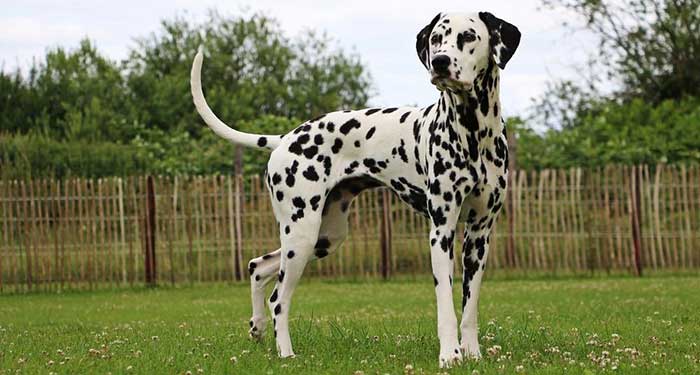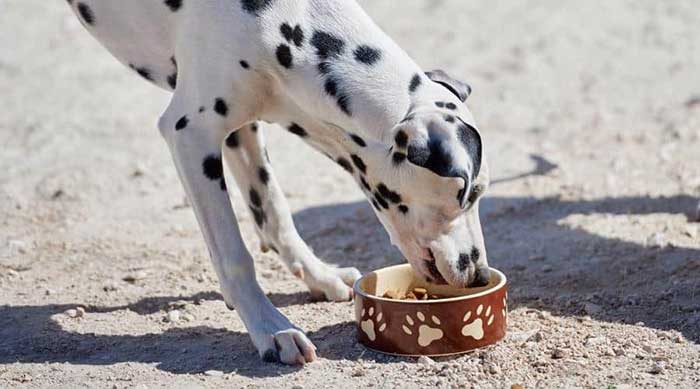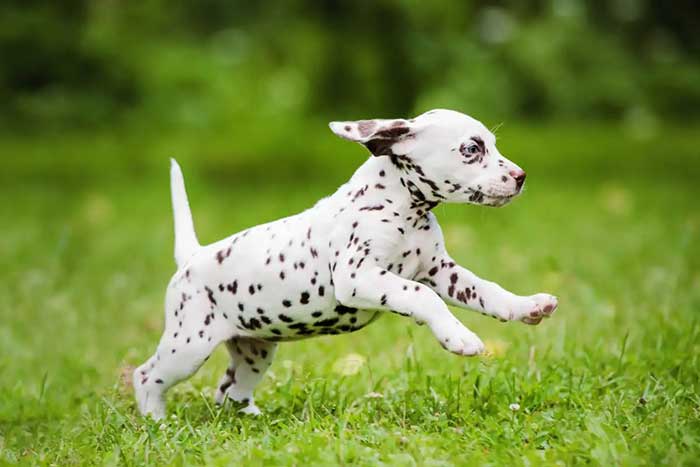While working at my pet center, I had opportunities to meet dalmatians in person. Dalmatians look bigger and more beautiful than images. When this guy sat down, he was almost as tall as my 6-year-old daughter who is 39 inches tall and this really took me by surprise. I wondered if this dog breed could grow even further and how big they get. I did some thorough research and here is what I found on when do dalmatians stop growing.
When Does a Dalmatian Stop Growing
The Dalmatian is a medium-sized dog with a height of 22-24 inches at the wither and 33-35 inches when sitting. Dalmatians will stop growing in height when they reach 16 months old, but they still gain weight depending on their diet and exercise; although some can sooner than the 16-month mark, others slightly later.

Dalmatians mature physically quickly. During the first 12 months of life, their bodies develop almost completely. Most Dalmatians have their growth plates completely closed within the first year of life, after that the skeleton will continue to grow but will be slower. This is an important stage where owners can help their dogs develop healthy bones by giving them proper foods and supplements in an adequate amount.
Weight development is different between male and female Dalmatians. Here is a Dalmatian growth chart by sex and stage:
| Age | Male (lbs & kg) |
Female (lbs & kg) |
| 3 months | 14-24 lbs (6.4-11 kg) | 13-22 lbs (6-10kg) |
| 4 months | 19-31 lbs (8.6 – 14 kg) | 17-29 lbs (8- 13kg) |
| 5 months | 23-38 lbs (10.5 – 17 kg) | 21-25 lbs (9.5-10.5kg) |
| 6 months | 27-45 lbs (12-20.5 kg) | 24-39 lbs (11-18kg) |
| 7 months | 31-50 lbs (14- 22.7 kg) | 27-41 lbs (12-18.5kg) |
| 8 months | 35-55 lbs (16-25 kg) | 30-45 lbs (14- 20kg) |
| 9 months | 38-60 lbs (17-27 kg) | 32-48 lbs (14-22kg) |
| 10 months | 42-64 lbs (19-29 kg) | 34-50 lbs (15-22.6kg) |
| 12 months | 47-68 lbs (21-31 kg) | 37-53 lbs (17-24kg) |
| 16 months | 50-70 lbs (22-32 kg) | 39-55 lbs (18-32kg) |
Please note that the numbers in this chart is an average and do not apply to all Dalmatians. If your dog’s weight falls outside these ranges, don’t be alarmed if the difference isn’t too big.
What can affect the growth of a Dalmatian?
The size of the Dalmatian is influenced by many factors such as diet, environmental conditions, and health status. In order to have a healthy dalmatian of a standard size, you need to provide everything he needs, with nutrition being the most important factor. Nutrition here doesn’t mean feeding as much as possible and eating everything, but balancing food groups just enough to support their growth without excess weight gain.
Food

(Food has a great impact on Dalmatians’ growth)
Dogs’ size is most affected by the food they eat. Make sure to feed your dalmatian with nutritionally balanced food. Replace treats and snacks with healthy foods like fruit. The most important thing is ensuring the food intake is sufficient for the dalmatian’s physical activity and energy levels.
Feeding your puppy good quality and nutritionally complete food designed specifically for puppies helps keep your puppy healthy in the long run. It is also important to know that the nutrition and frequency of feeding puppies are different from adult dalmatians. Specifically, puppies under 3 months old need to eat 4 meals a day. Puppies 3-6 months old need 3 meals a day, and puppies 6+ months old only need 2 meals a day.
Genetics and Breeding
We can see some dals are bigger than others. In addition to the nutritional factor, the gene is the next factor that determines the size of the dog. Big Dalmatian parents will generally have larger offspring and vice versa.
Some breeders, wanting to have exceptionally large dalmatians, have applied this genetic principle. Therefore, they breed together the largest parent dogs. I guess that the dalmatian I met was the result of this breeding.
Exercise
Humans benefit from exercising every day, and so do dogs. Regular and proper exercise helps stimulate muscle growth and promotes food digestion and nutrient absorption. As a result, overweight dogs will have slimmer bodies, while underweight dogs will be able to gain weight.

(Exercising your Dalmatian at an early stage will bring benefits in the long run)
However, you need to pay special attention to choosing the right exercise for Dalmatians because they have fragile bones and joints. Improper exercise can lead to short or long-term injuries that affect a dog’s development. The most recommended exercise for dalmatians is walking or slow runs.
Sleep
Why do we sleep? Yes, we sleep to recover physically and mentally after a day of work, and so do dogs. For puppies, sleep has a positive effect on their development. Puppies can even sleep all day, which is completely normal. If your dog doesn’t sleep, that’s a concern because a sleep-deprived dog is more likely to get sick and have a weaker immune system than dogs with quality sleep. During sleep, energy will be transformed into growth.
Dalmatian’s Mental Maturity
Dalmatians can stop growing physically at the age of 16-18 months, but they are not fully mature until 24-36 months of age. Some owners wonder if mental maturity will help the dog become calmer, and the answer is No. Being energetic is instinctive for this dog, but if your canine is destructive and overexcited too often, you can consider training your dog.
So, How Long Do Dalmatians Take to Grow?
Your Dalmatian can take an average of 16 months to grow to its natural height and weight. During this developmental stage, you can help your dog have a healthy weight and ideal size by providing the necessary food and appropriate exercise. By building habits and training early, you’re helping your dalmatian have a healthier and longer life.
Related posts:
